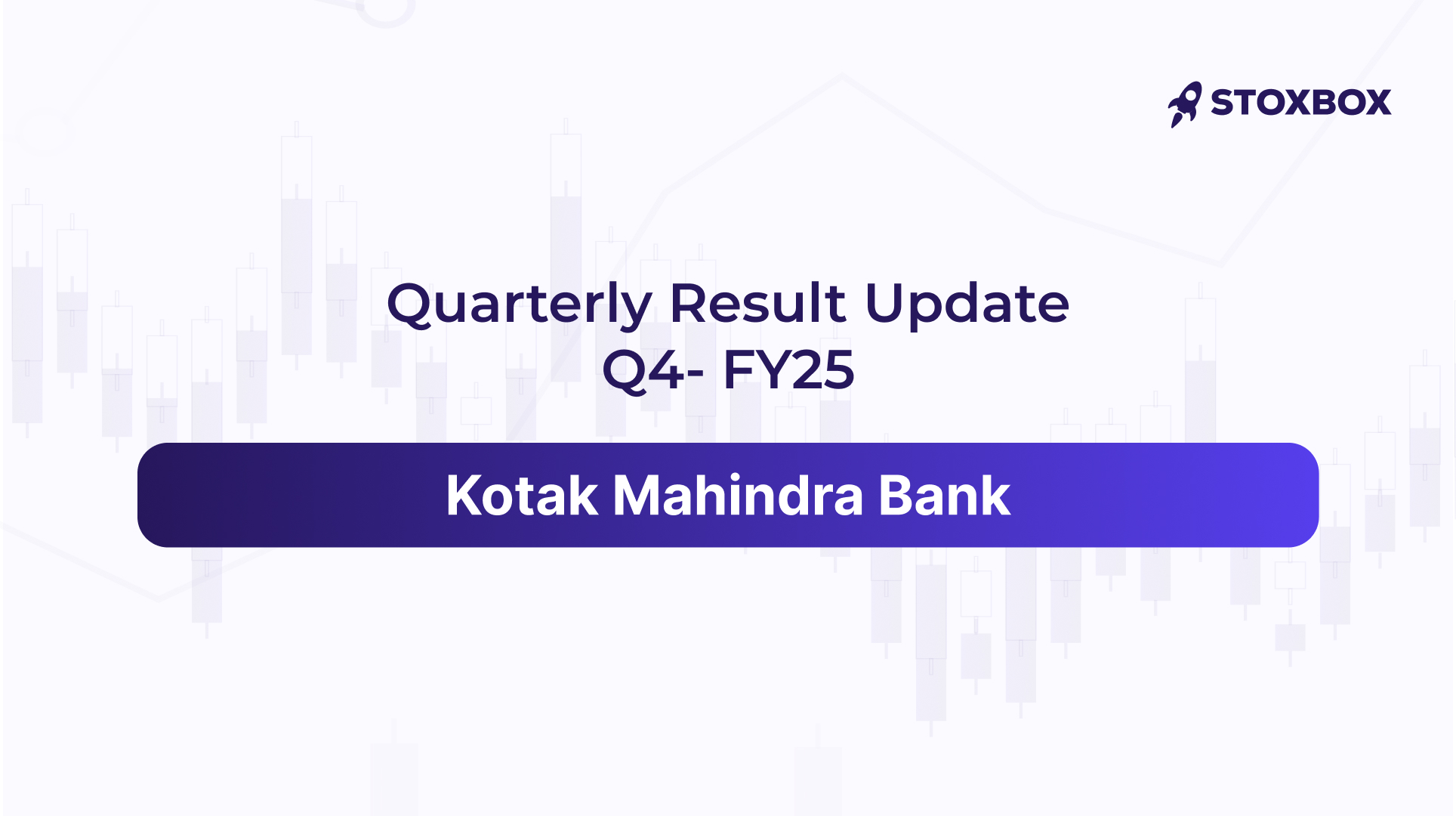Export momentum continues to remain strong despite domestic softness
The passenger vehicle (PV) segment experienced a modest increase in April 25, despite fewer new launches. However, dealer inventories remain high at nearly 50 days, leading to discount-driven retailing. The cars segment struggled, declining by 12.6% YoY, with its share of overall PV volumes dropping to 31.5%. In the PV segment, Mahindra & Mahindra (M&M) stood out with a remarkable 27.6% YoY growth, selling 52k units — its best performance since the festive season of 2024. The brand’s SUV sales jumped by 28%, driven by strong demand for models like the Thar Roxx, Scorpio N, and XUV 3XO, which helped M&M capture a larger market share. Maruti Suzuki also performed steadily, growing steadily by 0.55% YoY to sell 138k units, although it saw a 8% decline on a month-over-month (MoM) basis. In contrast, Tata Motors and Hyundai faced challenges. Tata Motors reported total PV sales of 45k units in April, down 5.6% YoY and 12.4% MoM. Within this, the company’s electric vehicle (EV) sales decreased significantly, with 5k units sold, reflecting a sharp 16.4% YoY decline and a marginal 0.7% MoM drop. The slowdown in EV sales impacted Tata’s overall performance, even as the broader PV market faced pressure from elevated inventories and weak retail demand. Hyundai’s sales slipped by 4.6% YoY to 60k units, along with a 9.7% drop on a MoM basis. Despite these challenges, Hyundai Motor India reaffirmed the Creta’s dominance as India’s top-selling model. In April 2025, the Creta sold 17k units, a 10.2% increase YoY. It remains the best-selling SUV from January to April 2025, with total sales of 69k units. Over the years, Hyundai has sold more than 1.2 million Cretas in India, solidifying its leadership in the mid-size SUV segment. While SUVs continue to drive market growth, demand in the entry-level segment remains weak. Industry experts are urging automakers to adjust production and manage inventories more effectively, with the Federation of Automotive Dealers Associations (FADA) reiterating its call for a 21-day inventory norm.
Passenger Vehicles
The passenger vehicle (PV) segment experienced a modest increase in April 25, despite fewer new launches. However, dealer inventories remain high at nearly 50 days, leading to discount-driven retailing. The cars segment struggled, declining by 12.6% YoY, with its share of overall PV volumes dropping to 31.5%. In the PV segment, Mahindra & Mahindra (M&M) stood out with a remarkable 27.6% YoY growth, selling 52k units — its best performance since the festive season of 2024. The brand’s SUV sales jumped by 28%, driven by strong demand for models like the Thar Roxx, Scorpio N, and XUV 3XO, which helped M&M capture a larger market share. Maruti Suzuki also performed steadily, growing steadily by 0.55% YoY to sell 138k units, although it saw a 8% decline on a month-over-month (MoM) basis. In contrast, Tata Motors and Hyundai faced challenges. Tata Motors reported total PV sales of 45k units in April, down 5.6% YoY and 12.4% MoM. Within this, the company’s electric vehicle (EV) sales decreased significantly, with 5k units sold, reflecting a sharp 16.4% YoY decline and a marginal 0.7% MoM drop. The slowdown in EV sales impacted Tata’s overall performance, even as the broader PV market faced pressure from elevated inventories and weak retail demand. Hyundai’s sales slipped by 4.6% YoY to 60k units, along with a 9.7% drop on a MoM basis. Despite these challenges, Hyundai Motor India reaffirmed the Creta’s dominance as India’s top-selling model. In April 2025, the Creta sold 17k units, a 10.2% increase YoY. It remains the best-selling SUV from January to April 2025, with total sales of 69k units. Over the years, Hyundai has sold more than 1.2 million Cretas in India, solidifying its leadership in the mid-size SUV segment. While SUVs continue to drive market growth, demand in the entry-level segment remains weak. Industry experts are urging automakers to adjust production and manage inventories more effectively, with the Federation of Automotive Dealers Associations (FADA) reiterating its call for a 21-day inventory norm.
Two Wheelers
In April 2025, the domestic two-wheeler (2W) industry reported a healthy growth, with TVS emerging as an outperformer among its peers with an annual increase of approximately 15%. On the export front, the segment also witnessed healthy growth with Bajaj Auto, Eicher Motors (Royal Enfield), and TVS reporting strong YoY growth, while Hero MotoCorp lagged behind. Despite these positive developments, retail demand remained subdued, primarily due to the Kharmas period that lasted until mid-April. Additionally, the implementation of OBD-2B compliance from April 2025 had a certain impact on the sales numbers as it affected vehicle affordability. Hero MotoCorp (HMCL) reported its April sales volumes at 305k units, reflecting a sharp 42.8% YoY decrease and a 44.4% MoM. This significant fall was partly due to a planned production halt for maintenance and supply chain realignment during the month. However, operations are expected to normalize in May. Meanwhile, the company’s electric mobility brand, VIDA, sustained its strong growth momentum in April, with dispatches of 7k units of the VIDA V2 electric scooter. Bajaj Auto’s performance remained subdued, with monthly sales reaching 317k units, registering a 7.0% YoY decrease and a modest 0.7% MoM rise. TVS Motor remained one of the best-performing players in the segment, benefiting from growth in its EV segments during the month. April volumes stood at 430k units, reflecting a solid 14.9% YoY growth and a 7.6% MoM increase. Eicher Motors reported a steady performance annually, but its sales fell MoM, reporting 86k units, reflecting a significant 5.7% YoY increase and a 14.3% MoM fall. High exports during the month supported its YoY growth, and volumes are expected to increase in the coming months, supported by ongoing new product launches. Going ahead, demand recovery is anticipated with the end of the Kharmas period, supported by seasonal factors and agricultural stability, which is also expected to boost the rural demand more than the urban demand. Additionally, the onset of the marriage season in northern India is likely to drive entry-level vehicle sales.
Commercial Vehicles
In April 2025, the Commercial Vehicle (CV) industry witnessed a slowdown in demand. Despite OEM-led price increase, stagnant Freight rate and fleet utilisation have weakened the market. Additionally, inventory levels remained elevated, underscoring weak market sentiment and slow retail movement. Tata Motors’ domestic CV segment reported total dispatches of 25.8k units, marking a decline of 9.7% YoY and 33.7% MoM. Ashok Leyland reported positive monthly volume growth, with March dispatches reaching 13k units, marking a drop by 6.0% YoY basis and 44.2% MoM basis. VE Commercial Vehicles (VECV) delivered strong monthly performance, with dispatches reaching 6.8k units, reflecting a 27.3% YoY rise and a substantial 43.4% MoM drop. M&M posted a moderate domestic CV volume, with April dispatches reaching 28.5k units, a marginal gain of 3.1% YoY, while it declined by 10.2% MoM. Going ahead in May 2025, the CV industry is expected to remain flat due to high-base effect, slower e-commerce activity and intensifying competition from electric three-wheelers. However, some relief can be seen due to OEM incentive schemes and forthcoming infrastructure projects, but these may not be enough to reverse the trend in the immediate term.
Tractors
In April 2025, tractor sales grew by 6.3% YoY, supported by favorable crop prices and rates provided by the mandis, which improved overall cash flows for the farmers. M&M delivered a strong performance in the segment, with volumes at 40k, representing an 8.1% YoY increase and a 14.1% MoM increase. In contrast, Escorts Kubota reported volumes of 8k, marking a 1.2% YoY decline and a sharp 23.3% MoM drop. On the export front, both M&M and Escorts Kubota posted impressive annual growth due to rising global demand, with M&M exports increasing by 24.6% YoY and those of Escorts Kubota increasing by 67.4% YoY. However, exports declined on MoM basis by 34.6% and 3.0% for M&M and Escorts Kubota, respectively. Looking ahead, the outlook for both companies remains positive. Tractor demand is expected to strengthen, supported by a favorable monsoon forecast, healthy water reservoir levels, a strong Rabi harvest, and robust financing trends.
You might also Like.
Export momentum continues to remain strong despite domestic softness The...
Sector Outlook: Positive Net Profit Declines 14% YoY on Elevated...


